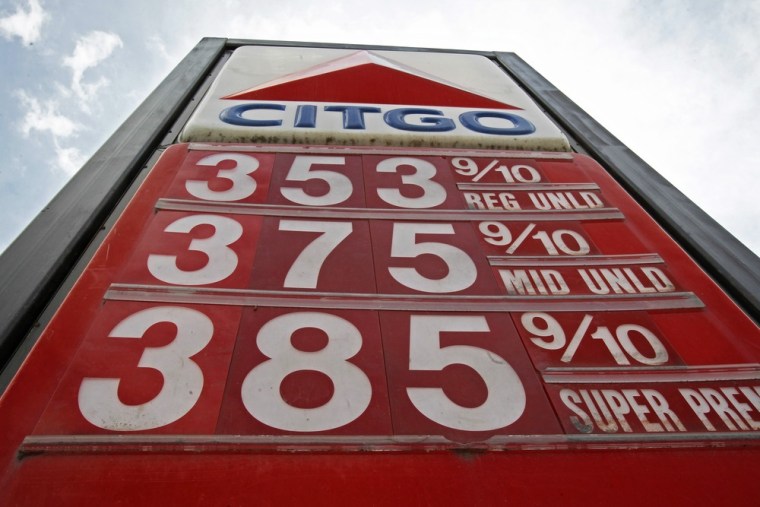Thanks to the Federal Reserve, the economy’s annual “spring slump” probably won’t become a spring stall.
If not for the central bank, which is pumping billions of dollars in cheap money into the economy, spending cuts set to kick in again for the next fiscal year likely would be having a larger impact on economic growth, hiring, business spending and consumer sentiment.
On Friday, the government will offer up the latest reading on the pace of growth in the first three months of the year with the release of its initial estimate of first quarter gross domestic product.
The performance is expected to be much stronger than the last three months of last year, when worries about the looming “fiscal cliff” paralyzed businesses and consumers and brought the economy to a near standstill. Most forecasters are expecting a first quarter growth rate of about 3 percent – up from the previous quarter’s dismal showing of just four-tenths of a percent.
That pickup in the economy came after the budget impasse in Washington was resolved at the start of the year and consumers and businesses made up for deferred spending, investment and hiring.
The growth spurt appears to be slowing now, although it’s not expected to stop short. The slower pace more likely simply reflects a return to the sluggish subpar growth that has been in place since the Great Recession ended in 2009.
“The fact that job growth fell below 100,000 a month in March is a bit worrying,” said Paul Ashworth, U.S. economist at Capital Economics. “But if you look at February and March together, you’ve still got gains of 170,000 a month because February was that big.”
Falling gasoline prices – down six percent since late February – are also helping to offset the burden consumers felt after a payroll tax cut expired at the start of the year. That should show up in next month’s data as a boost to consumer spending, said Ashworth.
Since the financial collapse of 2008, central banks around the world have been flooding the global financial system with cash to try to get more money flowing through the economy. The U.S. Federal Reserve has pumped more than $2 trillion of cash into the system and is increasing that amount by $85 billion a month.
Critics of the Fed’s unprecedented easy-money policy argue that it raises the risk of inflation and provides fuel for another ruinous bubble. But despite the Fed’s efforts to spur lending, much of the cash has been accumulating on banks’ books. In any case, there is little evidence of inflation; consumer prices remain stable and wages are flat.
The longer-term economic outlook depends heavily on whether government spending cuts, which are only beginning to take effect, deepen later this year.
“The effects are cumulative,” said Joel Naroff, chief economist at Naroff Economic Advisors. “It’s not going to happen right away, so it’s going to take time as the impact builds later this summer.”
Though there appears to be little progress on reconciling separate budget proposals from the White House, Senate and House, the political bickering that spooked businesses, consumers and investors late last year seems to have subsided.
“The rhetoric has toned down significantly,” Caterpillar CEO Doug Oberhelman told CNBC. “That's a big change from the last two years.”
So far, this year’s cuts seem to have had little impact on large U.S. companies’ hiring and spending plans, according to a survey released Monday by the recent National Association for Business Economics.
More than half the group said are rising sales, up from 37 percent in the fourth quarter, and some 29 percent said profit margins are improving.
“The economic news is a very bit brighter,” said Oberhelman. “I don't want to be overly optimistic here, but it certainly feels a little better than the last two springs.”
That optimism has been reflected in the gains in the stock market, which paused recently as investors took a closer look at the softer economic data. They’ll be getting a better read on the outlook in the next few weeks as companies report first quarter sales and profits.
While profits appear to be holding up for many big businesses, wages continue to stagnate for workers. Fewer than a third of companies surveyed by NABE said wages and salaries are rising. Only a fifth of the group said they’ve added new workers. Without pressure to hire more people, companies won’t feel compelled to raise wages and will likely try to do more with the workers they have.
If sales continue to rise, and managers hold the line on new hiring, corporate profits will likely continue to expand. At some point, though, employers may find they’ve stretched their workers to the breaking point. As the economy improves, said Naroff, the best workers may start looking elsewhere.
“They know they’ve been treated like trash for five years so anyone that can find another job is going to be looking for one,” he said. “That’s going to cause businesses to bid for the labor that they currently have and for new labor.”
That, in turn, will likely translate into faster wage growth and more powerful consumer spending, helping to boost economic growth further, said Naroff.
At the current level of weak job growth, it will likely take nearly two years to bring the unemployment rate down to levels that spark higher wages, according to most forecasters, including the Federal Reserve. At their latest policy meeting in March, U.S. central bankers tweaked their estimates for the jobless rate to show it falling to between 6.7 percent to 7 percent by the end of 2014 and to a range of 6 percent to 6.5 percent in 2015.
